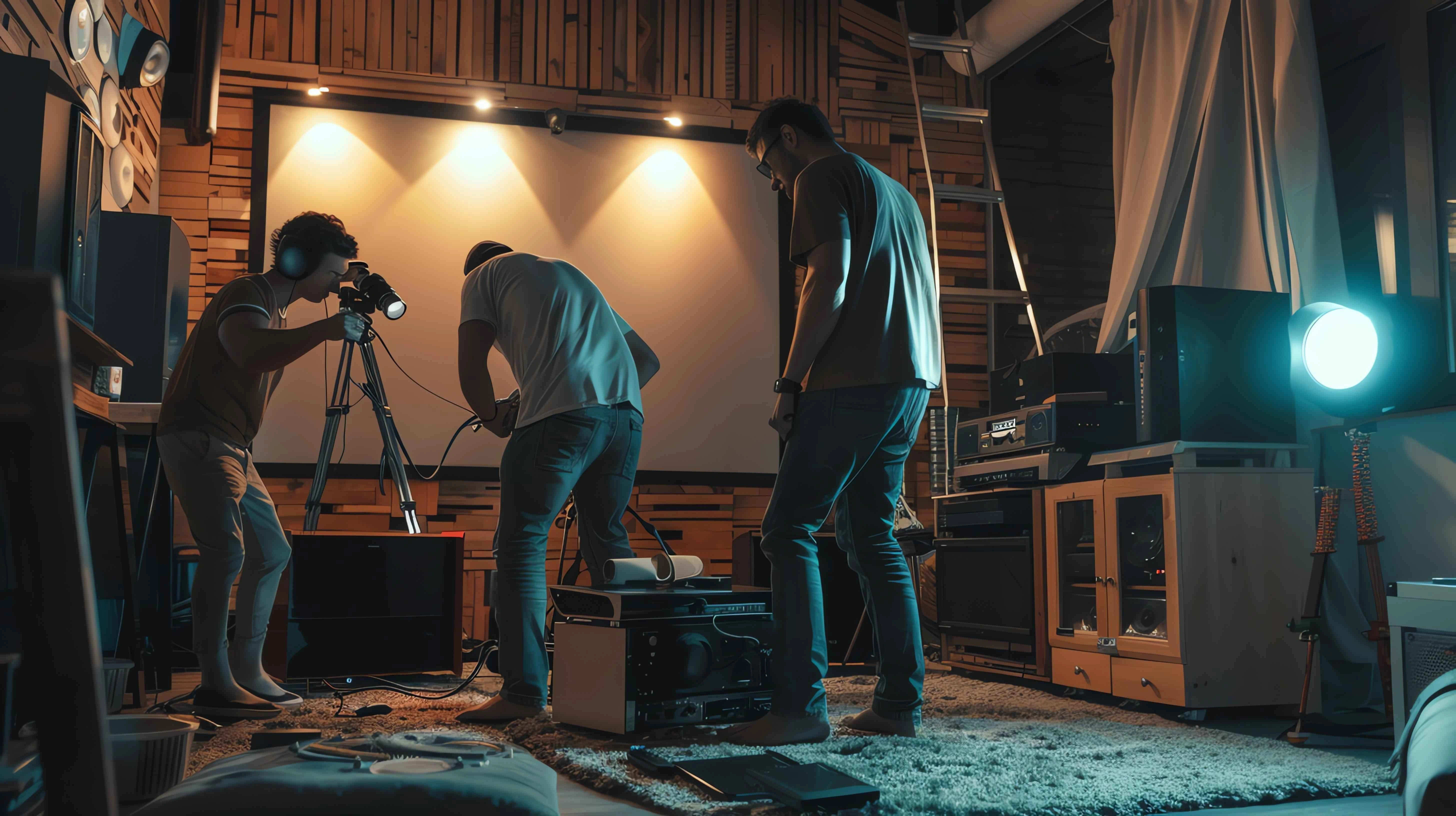Designing a Movie-Magic Lighting Setup for Your Home Theatre
A captivating home theatre experience hinges on more than just a top-tier screen and surround sound—lighting sets the stage for true immersion. The right lighting can transport you into the heart of a film, blending functionality with atmosphere to create a movie-theater vibe at home. Here's a fresh guide to crafting a lighting setup that brings cinematic magic to your viewing space.

Why Lighting Defines the Cinematic Experience
Lighting in a home theatre does more than illuminate—it shapes the mood, enhances screen clarity, and ensures comfort during long viewing sessions. By controlling light sources, you can eliminate distractions, deepen contrast, and evoke the ambiance of a premium cinema.
Core Elements of a Movie-Magic Lighting Setup
1. Screen-Back Lighting for Visual Ease
Screen-back (or bias) lighting reduces eye strain by softening the contrast between a bright screen and a dark room. It also boosts perceived image quality, making colors and blacks appear richer.
• How to Do It: Attach dimmable LED strips (6000K–6500K for neutral white) to the back of your TV or projector screen. Ensure the light diffuses outward, avoiding direct glare.
• Pro Tip: Use smart LED strips that adjust brightness automatically based on the screen's content for a seamless experience.
2. Mood-Setting Overhead Lighting
Overhead lighting establishes the room's ambiance, mimicking the soft glow of a theater. Dimmable fixtures in warm tones (2600K–3000K) create a cozy, inviting feel without overpowering the screen.
• How to Do It: Install recessed ceiling lights or pendant fixtures with dimming controls. Smart bulbs, like those from Wyze or TP-Link, let you customize hues for different films.
• Pro Tip: Set up "movie mode" presets on a smart home app to dim lights gradually as the film begins, enhancing the theater-like transition.
Advanced Lighting Techniques
3. Thematic Glow Lighting for Drama
Glow lighting adds a dramatic flair, highlighting features like wall art, shelves, or seating to give your space a polished, cinematic edge.
• How to Do It: Place RGB LED strips along the edges of furniture, behind decor, or under steps. Choose colors that complement your room's theme or the movie's mood.
• Pro Tip: Use audio-reactive LEDs that pulse subtly with the soundtrack, adding excitement to action sequences or depth to emotional scenes.
4. Navigational Lighting for Convenience
Navigational lighting ensures safe movement during breaks without breaking the cinematic spell. Low-intensity lights keep the focus on the experience when dimmed.
• How to Do It: Install motion-sensor LED strips along walkways or small, warm-toned (2700K) lamps near seating. Battery-powered options work well for minimal wiring.
• Pro Tip: Program navigational lights to activate only when motion is detected, preserving the mood during the film.
Smart Controls for a Seamless Experience
Integrating your lighting with a smart home platform like Home Assistant, SmartThings, or Siri adds convenience and sophistication. Automate lighting sequences—like dimming overhead lights and activating glow lighting when you start a movie—or use voice commands for hands-free control. This lets you focus on the film, not the setup.
Tips to Perfect Your Lighting Design
• Eliminate Glare: Position lights to avoid reflections on the screen. Test with a bright image to spot and adjust any issues.
• Choose Dark Tones: Opt for dark walls or furniture to minimize light bounce and enhance screen contrast.
• Balance Light Layers: Combine neutral screen-back lighting with warm overhead and colorful glow lights for a harmonious look.
• Ensure Safe Installation: Verify that all lighting fixtures and wiring meet safety standards, especially for ceiling or wall-mounted setups.
A movie-magic home theatre lighting setup weaves together screen-back lighting, mood-setting overhead lights, thematic glow lighting, navigational lights, and light-proofing to create an immersive, theater-like experience. With smart controls and thoughtful design, you can turn every viewing session into a blockbuster event. Light your space with intention, and let the cinematic magic unfold.